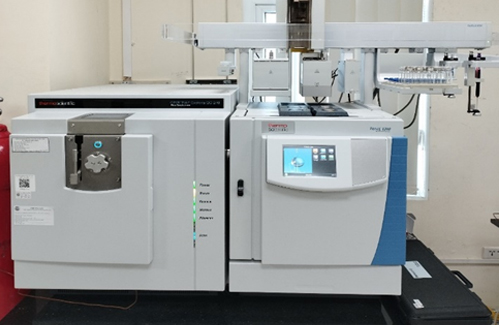- Folder Chemical field
- Views 1313
- Last Updated 22/04/2022

1. Principle
Liquid chromatography is the separation that takes place on a column with solid particles called stationary phase and a mobile phase being a liquid. Analytical samples are transferred to a column in solution form. Anions or cations in the samples pass through the chromatographic column with a variety of speed due to the different interactions of the ions between the stationary phase (column) and the mobile phases. The high-performance ion exchange chromatography systems are used to separate ionized analytes under high pH conditions, which travel at different speeds and separate from each other.
The ordinary analysis procedure is as follows: The prepared solutions of samples are transferred by hand or an autosampler. For the analysis of cations, the samples are pumped through a column parking negatively-charged plastic particles. Any cations in the samples are retained by these particles. The positively-charged in eluate is pumped through the column and the ions in eluate replace the positive ions that were previously retained. The weak strength of the bonding force between cations and resin in the column causes different retention times for each ion; accordingly different ions in one sample can be detected in an order .
The ions and eluate pass through a set that neutralizes the charge of eluents. Ions are detected by an amperometric detector. The signals are recorded and processed and sent to the computer.
In terms of anion analysis, the same processes are performed, but negatively-charged eluents are used with a positively-charged stationary phase (column packing positively-charged resin).

Diagram of HPEAC-PAD system structure
Pulsed Amperometric Detection (PAD) mode detects analytes by measuring the electric current generated by the oxidation of analytes on the surface of a gold electrode. Because this type of detector can detect compounds containing functional groups oxidized at used voltage, the method is sensitive for analysing substances of carbohydrate group.
2. Application of HPAEC-PAD system in Department of nutrition and food additives
HPAEC-PAD is a technique used to directly determination carbohydrates without derivatisation. The methods using HPAEC-PAD regularly applied for a variety of matrices, with a wide range of content from ppb to macro analysis. Furthermore, the methods rarely utilise unfriendly-environmental and toxic chemicals.
- Determination GOS, FOS, mono-di-tri saccharide,... in food
- Determination Inositol, polyols
- Analyse the soluble dietary fiber (SDF) content.










-cua-hang-Waters.jpg)








